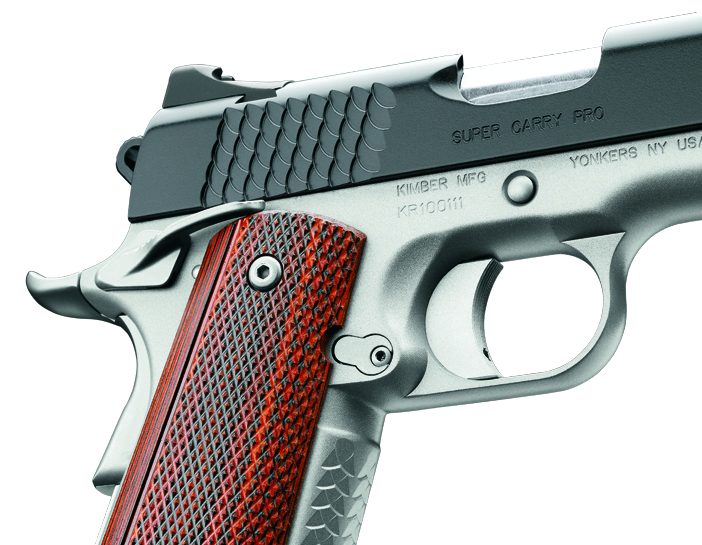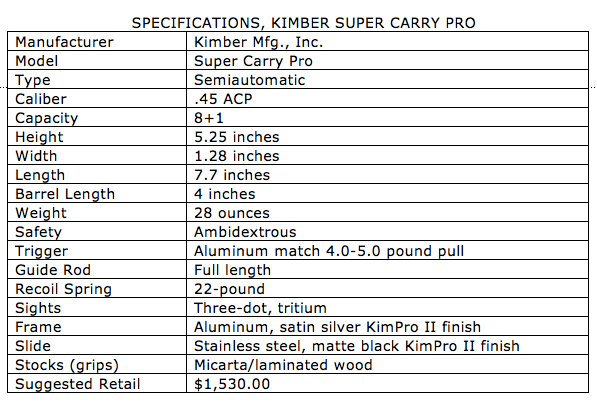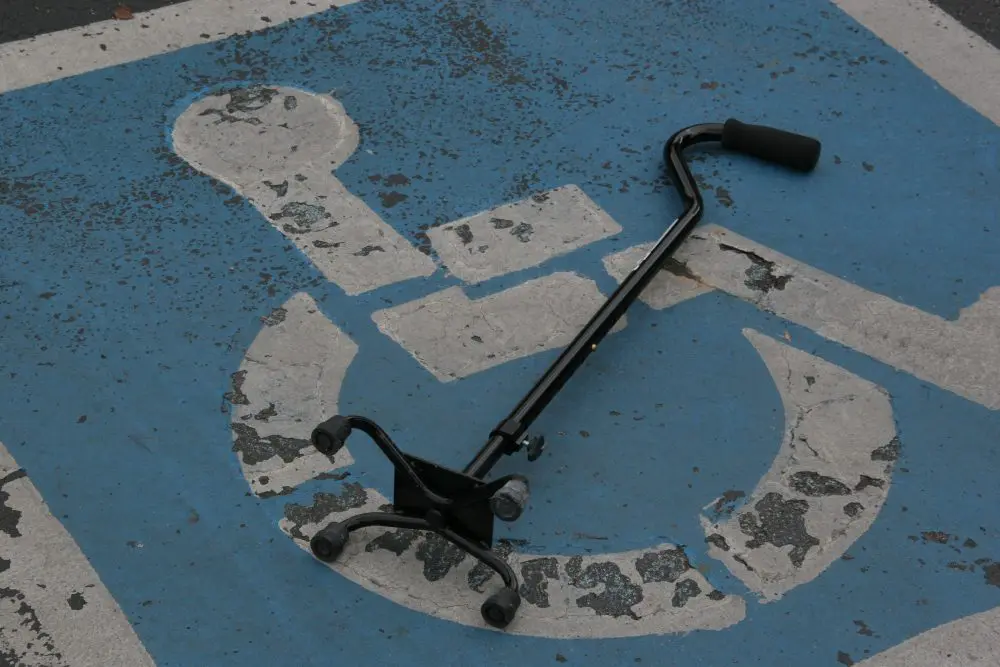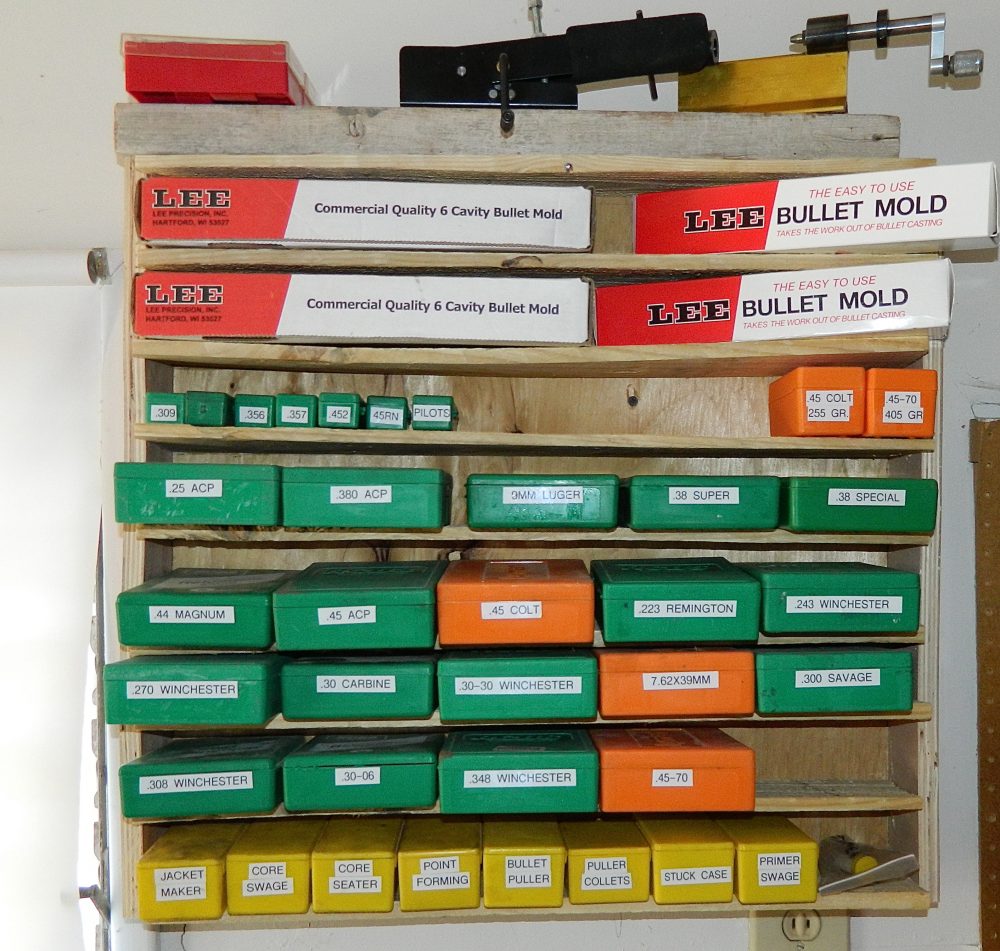The Model 1911 pistol will officially turn 100 years old on May 5, 2011. (For those who would nitpick, yes, I realize that John Moses Browning’s design actually predates 1911 by several years, including the Model 1910, which was the final prototype for the Model 1911.)

Besides the power of the .45 ACP cartridge, it was the reliability of the 1911 that finally led the Army Ordnance Board to accept it over competitors from Savage and Luger. At one point in the tests, 6,000 rounds were fired through a single 1911 pistol with nary a malfunction.
For six decades or so the 1911, and later the 1911-A1, chugged along and retained this level of reliability. But then it became vogue to “improve” it. (Hint: it’s hard to fix that which isn’t broken.)
Today, the 1911 has a hit-or-miss reputation. Models from some manufacturers run like the proverbial freight train, others are “acceptable,” and some have dismal reputations.
One manufacturer with a very good reputation is Kimber, and one of the Kimber Custom Shop’s newest entries for self-defense is the Super Carry Pro™. I recently received one for evaluation.
At first glance, stylish is the word that comes to mind to describe the Super Carry Pro (SCP).
The SCP features a round heel frame that is not only comfortable, but is unlikely to snag clothing while also reducing printing through a cover garment. Unidirectional serrations, which resemble the scales on a snake or fish, are along the top of the slide, the rear of the slide, and on both the frontstrap and backstrap of the frame. These are aesthetically pleasing as well as very functional.
Due to its round heel frame, the Super Carry Pro conceals almost as well as the Kimber Compact and similar size pistols that use shorter six- or seven-round mags, but the SCP uses a full-size magazine. One extra round may not sound like much to those carrying pistols that have over a dozen rounds on board, but when compared to a seven-round magazine in a compact .45, that one extra round amounts to an increase of 15%. If a ten-round magazine is carried for a reload such as the Chip McCormick Power Mag (available from Brownells), it amounts to an increase of 45%!
Stock (grip) panels are Micarta/laminated wood that resembles cocobolo.
Slide lock is recessed on right side of frame. Rear sight has step to aid in one-handed manipulation.
The SCP has Kimber’s Carry Melt Treatment™ and, except for the rear of the front sight, which should have sharp edges for a crisp sight picture, there are no sharp edges on the frame or slide. The magazine well has a slight bevel on both sides and the rear of the well.
The slide is stainless steel, blackened with KimPro II™ finish. The frame is machined from premium aluminum and finished with satin silver KimPro II. KimPro II is resistant to moisture and reported to be self-lubricating.

The match-grade barrel is a four-inch bushingless design. The front of the barrel is recessed to protect the rifling at the muzzle.
One problem common to pistols with a barrel shorter than Commander length (4.25”) is the speed that the slide travels at, which can often cause malfunctions. To increase reliability and keep the slide velocity down, Kimber employs a 22-pound recoil spring in the Super Carry Pro.
Sights are the three-dot type with tritium inserts (night sights). The rear sight has a step built into it to enhance one-handed operation.
The SCP features an ambidextrous thumb safety, recessed slide lock pin, and match-grade trigger. The grip safety is enlarged where it engages the hand for sure operation.
The pistol is shipped with a single eight-round magazine in a padded hard-side case with lock, manual and recoil spring takedown tool.
FIELD EVALUATION
I began the evaluation of the Super Carry Pro by firing 20-round strings from 11 different .45 ACP loads to establish velocity using a PACT Professional chronograph. The magazine that came with the pistol and eight-round Kimber KimPro Tac-Mags were used for the entire evaluation period. The SCP was not lubricated to evaluate the self-lubricating properties of the KimPro II finish and to allow metal-to-metal parts to wear in.
The pistol was initially very tight during chronographing. Approximately one out of every 30 rounds would chamber but fail to go completely into battery. By the time the 220-round chronograph testing was completed, however, the pistol had smoothed itself out and was running more reliably, though still not 100%.
After the chronograph firing was completed, some small shiny spots had developed from metal-to-metal contact on the slide and frame. The pistol was lubricated and I commenced firing the same 11 loads for accuracy from 25 yards standing. Average group size was around four inches. Is the Super Carry Pro capable of better accuracy? Probably, but mechanical accuracy fired from a bench or a device like the Ransom Rest has very little to do with real-world shooting. I was more concerned with what I could do with the pistol while standing on my hind paws.
Sights have tritium inserts. Unidirectional serrations on rear of slide, frontstrap and backstrap of frame are aesthetically pleasing as well as functional.
Somewhere between round 250 and the last of the 440 rounds fired for the chronograph/accuracy evaluation, the malfunction described above ceased, and the SCP was running at 100% reliability. [Note: In all fairness, the manual that comes with the SCP recommends a 400- to 500-round break-in period. S.W.A.T. recommends breaking in any new firearm to ensure reliability before carrying it for self-defense.]
The remainder of the evaluation consisted of numerous drills for both single and multiple adversaries. These included Bill Drills, single shots from the holster, El Presidente, Demi Presidente and box drills. I also fired moving laterally to the left and right, moving right and left while taking a diagonal step backwards, and shooting on the move while performing both speed and tactical reloads as necessary.
One drill I had never seen before was shown to me by “Super” Dave Harrington while taping an episode for the second season of S.W.A.T. Magazine TV. The drill is called the Iron Cross, and I tried it during the evaluation of the SCP.
The drill consists of the following: draw and fire one shot center mass; draw and fire one shot weak hand only; draw, change the pistol to the weak hand and fire one shot; draw with the weak hand and fire one shot. Make a right face, and repeat the above. Make another right face (the target is now directly behind you) and repeat the firing sequence from the left side. Repeat the sequence from the right side. Make a third right face (target is now 90 degrees to your right side) and repeat the drill. Make a final right face, once again facing the target, and fire the last four rounds.
Due to rounded butt, Kimber Super Carry Pro conceals almost as well as shorter Kimber Compact Stainless II (top), while carrying more ammunition. If a ten-round magazine is carried for a reload such as the Chip McCormick Power Mag (available from Brownells), it amounts to an increase of 45%!
While none of the above drills—with the exception of moving off the line of attack—are particularly “tactical,” they do allow practice of basic marksmanship techniques and weapon manipulation.
I found the Super Carry Pro’s recoil very manageable. This may be due in part to the 22-pound spring.
Speaking of recoil springs, Kimber recommends changing the springs in their four-inch barreled pistols every 800 rounds. The pistol began to cough a bit—that is, a round would chamber albeit not at the normal cyclic rate—at about 750 rounds. I changed the recoil spring and everything returned to normal.
While I had initially planned on running the Super Carry Pro for 1,000 rounds, I stopped at around 850—the pistol simply had nothing further to prove.
On a personal note, I would like to see all manufacturers ship firearms with a minimum of two (preferably three) magazines.
Would I recommend the Super Carry Pro to others? I’ll answer that by saying that, while I have numerous other 1911-type pistols, I’m thinking very seriously of buying the test pistol for everyday carry.
SOURCES:
Kimber Mfg., Inc.
Dept. S.W.A.T.
One Lawton Street
Yonkers, NY 10705
(800) 880-2418
www.kimberamerica.com
Black Hills Ammunition
Dept. S.W.A.T.
P.O. Box 3090
Rapid City, SD 57709-3090
(605) 348-5150
www.black-hills.com
Federal Cartridge Company
Dept. S.W.A.T.
900 Ehlen Drive
Anoka, MN 55303-7503
(800) 322-2342
www.federalcartridge.com
Hornady Mfg. Co.
Dept. S.W.A.T.
Box 1848
Grand Island, NE 68802-1848
(800) 338-3220
www.hornady.com
PACT Inc.
Dept. S.W.A.T.
P.O. Box 535025
Grand Prairie, TX 75053
(800) 722-8462
www.pact.com
Taurus International Mfg., Inc.
Dept. S.W.A.T.
16175 NW 49 Ave.
Miami, FL 33014
(800) 327-3776
www.taurususa.com











